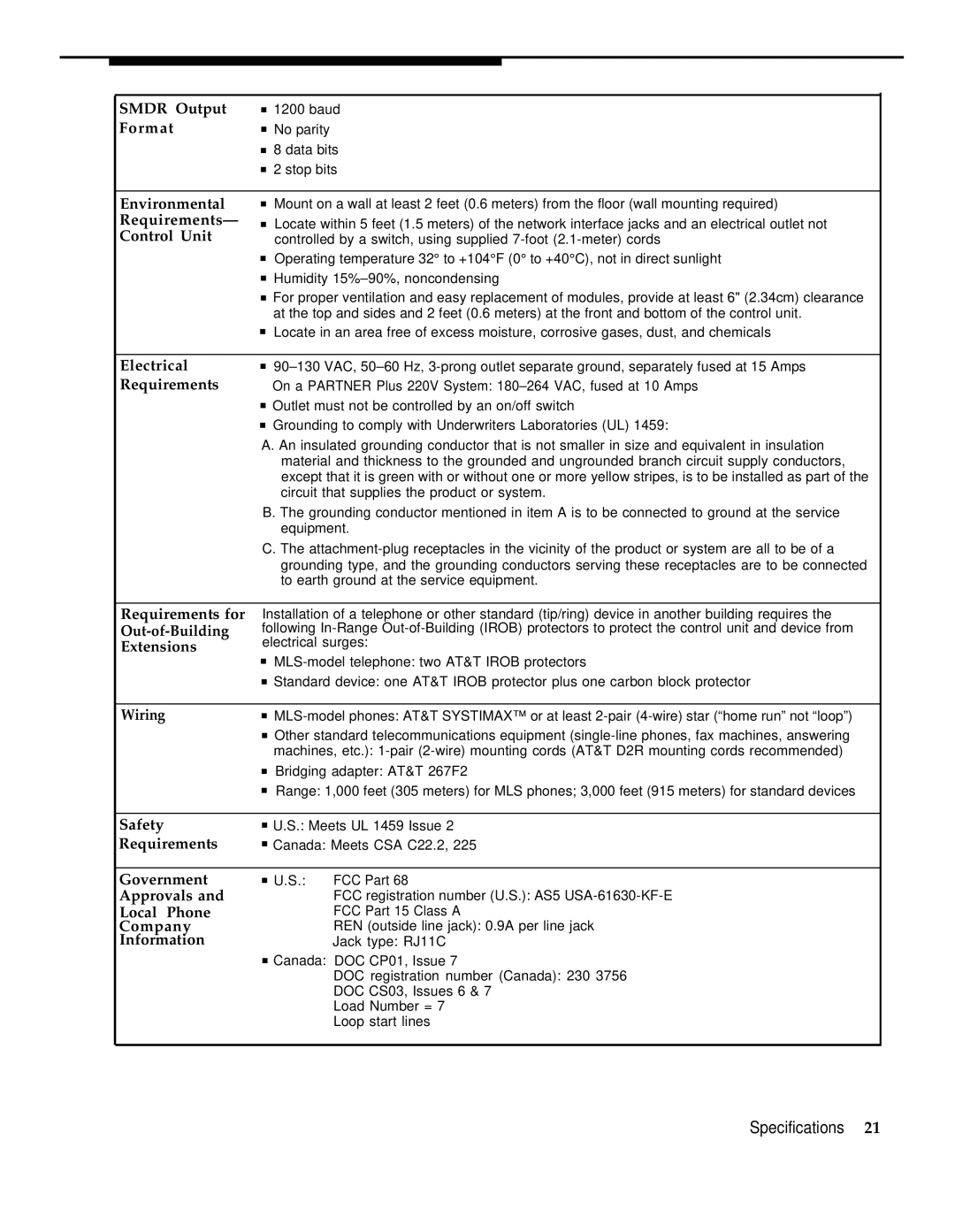PARTNER Plus Communications System Release 3 specifications
The AT&T PARTNER Plus Communications System Release 3 represents a significant advancement in business telecommunications, designed to cater to the needs of small to medium-sized enterprises. This versatile phone system offers a range of features, technologies, and characteristics that enhance productivity and streamline communication.One of the hallmark features of the PARTNER Plus system is its modular design, allowing businesses to customize their communication setup according to their specific requirements. This scalability means that as a business grows or changes, the system can easily adapt without necessitating a complete overhaul. With support for up to 48 extensions, businesses can expand their communication capabilities seamlessly.
The system boasts a user-friendly interface that simplifies operation and management. The intuitive design enables users to navigate through features like call forwarding, voicemail, and conferencing with ease. Furthermore, the built-in Caller ID feature enhances call management, ensuring that users can identify incoming calls efficiently, contributing to better customer service.
The PARTNER Plus system also incorporates advanced voicemail capabilities, including the ability to assign voicemail to individual extensions. This feature allows for personalized messages, making it easier for customers to connect with the right department or individual. Voicemail-to-email integration is another powerful characteristic, enabling users to receive voice messages directly in their email inbox, enhancing accessibility.
In terms of technology, the PARTNER Plus system supports both analog and digital lines, offering flexibility in connectivity options. This adaptability allows businesses to choose the most economical solution based on their existing infrastructure. Additionally, the system supports telemarketing and call screening features, helping businesses manage sales and customer communications effectively.
Another notable characteristic of the PARTNER Plus system is its compatibility with various add-on equipment and accessories. This includes cordless handsets, speakerphones, and wireless headsets, which enhance mobility and communication ease within the workplace.
In conclusion, the AT&T PARTNER Plus Communications System Release 3 stands out as a robust and flexible solution for businesses seeking reliable, efficient, and sophisticated communication tools. With its combination of modular design, user-friendly features, and advanced technology, it effectively addresses the evolving demands of contemporary businesses while promoting improved connectivity and productivity. Whether for a small startup or an established enterprise, the PARTNER Plus system is an invaluable asset in navigating the complexities of modern communication.

